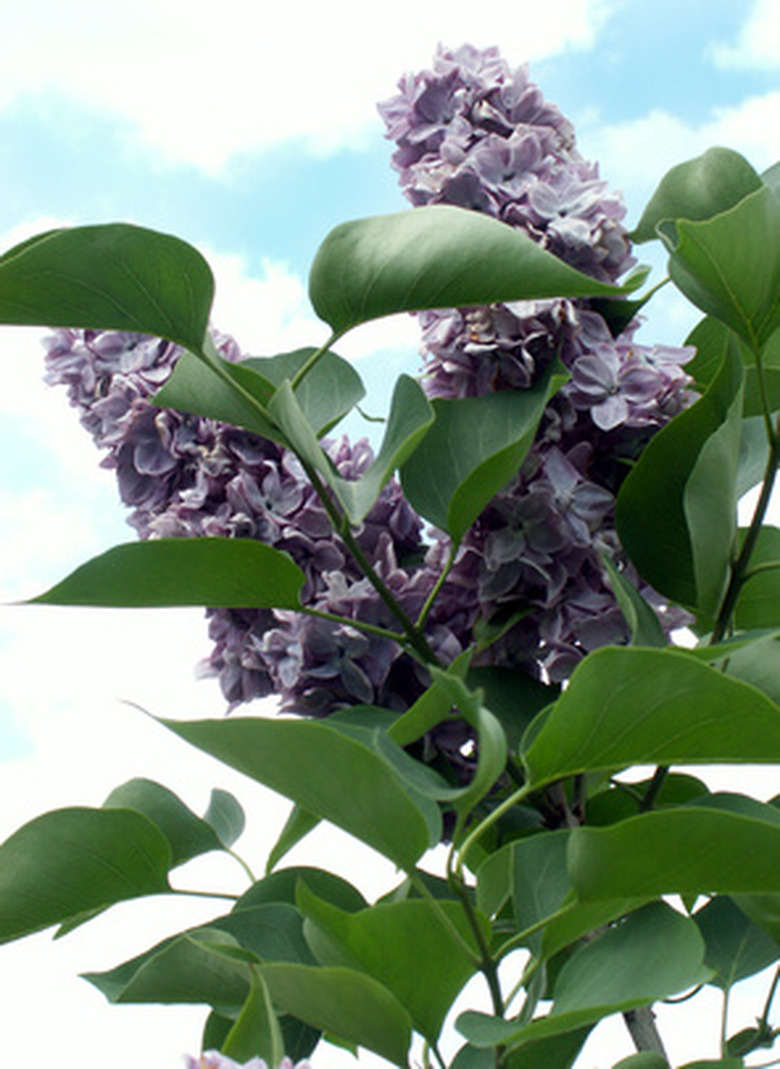Lilac Root Rot
The lilacs in your home garden, prized for their pleasant fragrance and calming color, are under a significant threat by fungal pathogens that cause root rot disease. No matter how young or established your lilacs are, they are still susceptible. Get to know the fungi that often attack lilacs and how to deal with them should infection occur for the continuation of a healthy landscape.
Care
Well cared for, vigorous lilac plants have a greater potential for resisting or recovering from fungal infections compared to stressed plants. Grow your lilacs in locations that offer full sun exposure for most successful development and flowering, according to the University of Illinois Extension. Lilacs thrive in well-drained soil and perform best when pruned just after they flower.
Identification
Lilac plants (Syringa species) are primarily attacked by the root rot fungal diseases Armillaria, Rhizoctonia and Phytophthora, according to the Oregon State University Extension. Fungi have an affinity for waterlogged soil as well as cool, moist conditions. Whether your plant is in a container or growing in your home landscape, they are equally vulnerable to infection.
- The lilacs in your home garden, prized for their pleasant fragrance and calming color, are under a significant threat by fungal pathogens that cause root rot disease.
- Get to know the fungi that often attack lilacs and how to deal with them should infection occur for the continuation of a healthy landscape.
Effects
Root rot fungi generally inhabit soil and spread sporadically on wind and rain, entering lilacs through their roots and causing decay in the bottommost parts, eventually detrimental to the entire plant. Root rot results in leaves that fade and die, the dieback of branches, and crown discoloration to a red/brown hue, according to the Oregon State University Extension. Rotting roots and the base of the main stem often darken in color and become soft. When root systems are severely injured, lilacs can no longer absorb the nutrients and water they need; plants suffer severe decline and face plant death.
Considerations
Since lilacs are highly susceptible to root rot diseases, do not plant them in previously infected soil. If you must remove a lilac that has died, do not replant a new lilac as infection will likely occur. Look for resistant plants, instead. For example, barberries, Japanese maples, bush acacias and Chinese wisteria are all known for their resistance to armillaria root rot, according to the Washington State University Cooperative Extension. Contact your local county extension agent for an idea of root rot resistant plants particular to your region.
- Root rot fungi generally inhabit soil and spread sporadically on wind and rain, entering lilacs through their roots and causing decay in the bottommost parts, eventually detrimental to the entire plant.
- Since lilacs are highly susceptible to root rot diseases, do not plant them in previously infected soil.
Control
Chemical controls cannot cure a root rot problem once it has occurred, but soil fumigants may provide assistance in easing the spread of pathogens. Contact a licensed professional as these chemicals are not appropriate for home application, according to the Washington State University Cooperative Extension.
Natural control methods include maintaining extremely well-drained soil, as standing water creates an ideal environment for fungi germination; removing and destroying affected plant parts; sanitizing pruning shears after each cut, and when beginning work on another plant, to inhibit disease transfer.
